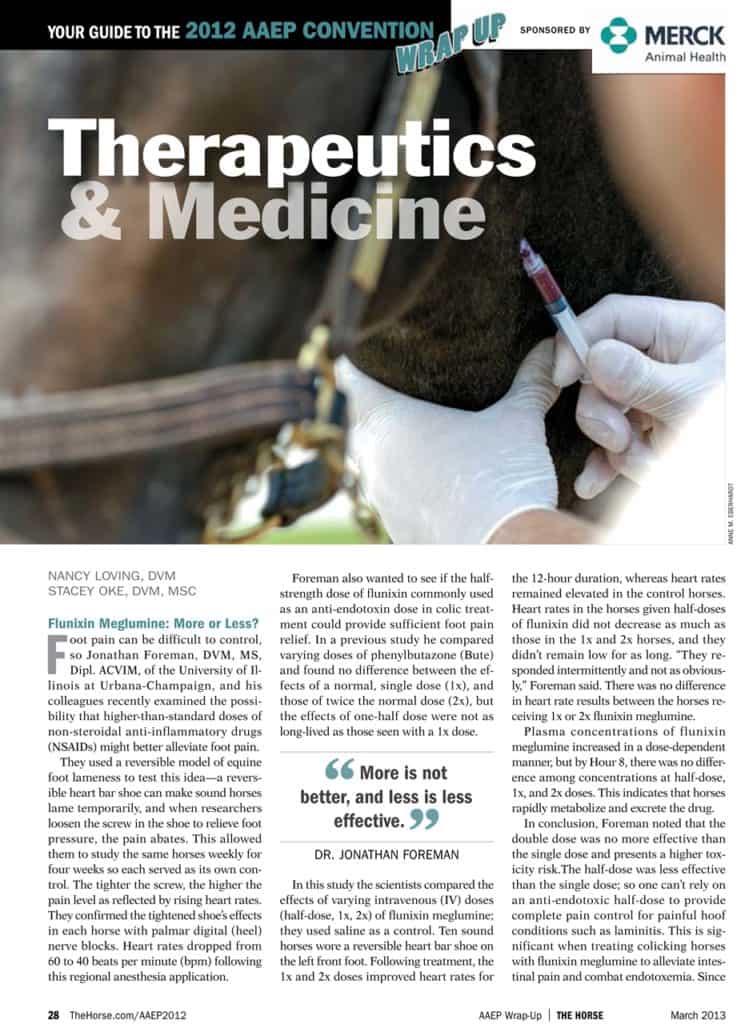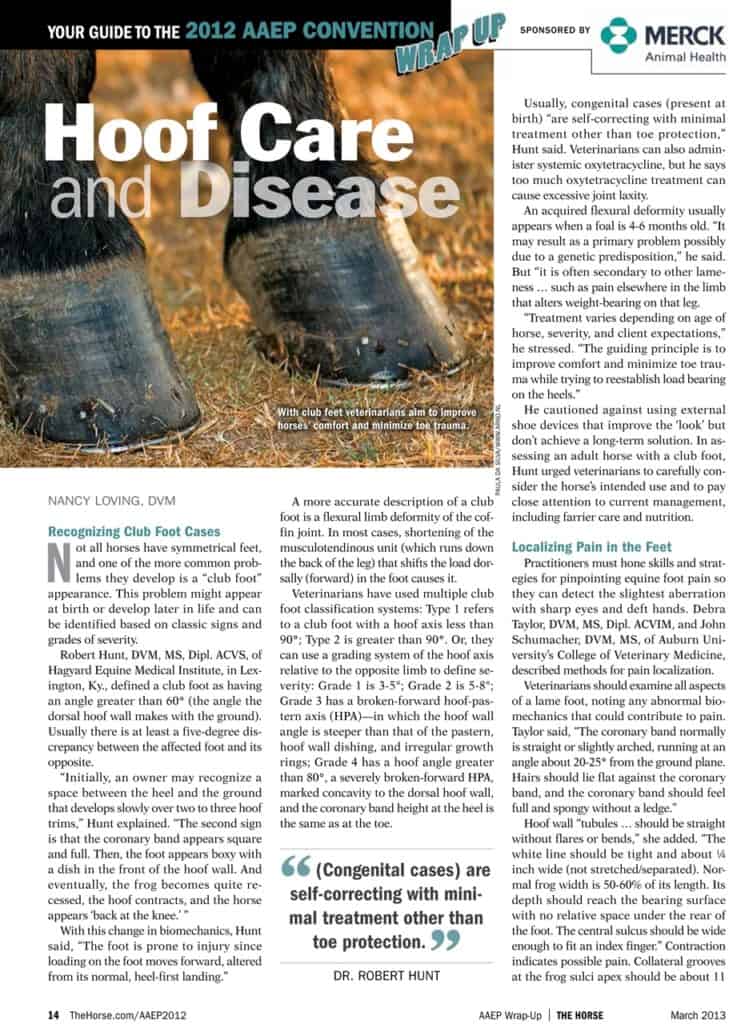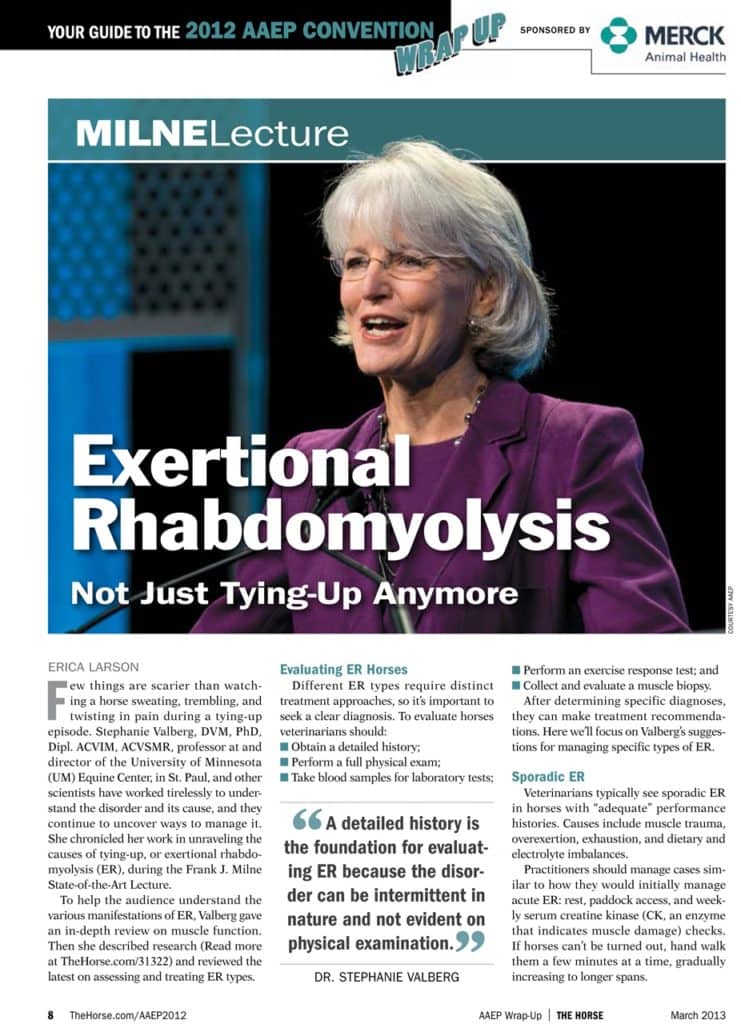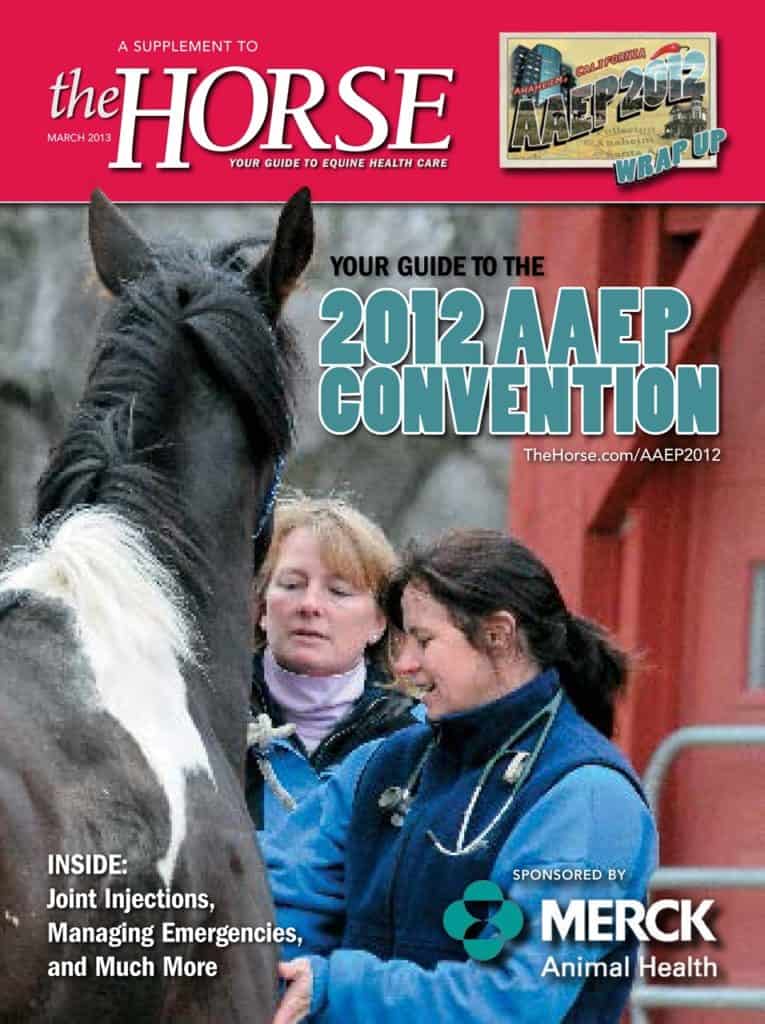
Equine Dental Care (AAEP Convention 2012)
Learn about tooth extraction complications and options veterinarians have for handling tooth extraction failures.

Learn about tooth extraction complications and options veterinarians have for handling tooth extraction failures.

Learn the newest information about stem cell therapy for mare uterine inflammation, superficial digital flexor tendon injuries, and more.

Drs. Lisa Fortier, Stephen Reed, and Pat McCue present recent study summaries. Topics include colic, endocrinology, metabolic syndrome, laminitis, foals, neurologic and muscle diseases, orthopedic therapies, racehorses, and upper airway issues.

Learn about the veterinarian-client-patient and veterinarian-farrier relationships, plus ethical issues facing racetrack vets.

Dr. Mary Rose Paradis discusses options and methods for feeding orphan foals. Learn about inducing lactation in barren mares, using milk substitutes, feeding orphans with milk from other species, and more.

Lameness topics include track surfaces, suspensory, flexion tests, sesamoid, and non-weight-bearing injuries, and more.

Find out about flunixin meglumine dosage for hoof pain; comparing IV and oral bute testing; and using the antispasmodic gastrointestinal drug N-butylscopolammonium bromide for use in eye exams.

Learn about diagnostic testing for insulin issues, lyme disease, L. intracellularis, and respiratory conditions.

Learn about club feet, localizing pain, hoof biomechanics, and the role radiographs play in farriery.

The University of Minnesota’s Dr. Stephanie Valberg discussed exertional rhabdomyolysis (formerly tying up) the 2012 Frank J. Milne State-of-the-Art lecture during the 2012 AAEP convention.

Our in-depth coverage of the 2012 American Association of Equine Practitioners convention in Anaheim, Calif., includes summaries of more than 100 up-to-date presentations and other sessions on all aspects of equine veterinary medicine.

Equine respiratory system dysfunction is an important cause of exercise intolerance and poor performance in horses.

Do you ever wonder what colors your horse sees, if he has decent night vision, or where his blind spots are located? Learn the answers to these questions, as well as well facts about ocular diseases and eye structure, in this special report.

In this issue learn about the benefits of specialization, the top five reasons you should have reproduction as part of your practice, keeping veterinary medicine fun, and building rapport with clients. Plus, meet veterinary student Brittany Bell.

Rhodococcus equi is well known for its ability to cause severe pneumonia in young foals, but it can also cause septic arthritis (infection of joints), osteomyelitis (infection of bones), neonatal diarrhea (enterocolitis), and more.

Use this handy form to leave your horse and house sitters all the information they need to care for your animals and property while you’re away.
Stay on top of the most recent Horse Health news with
"*" indicates required fields